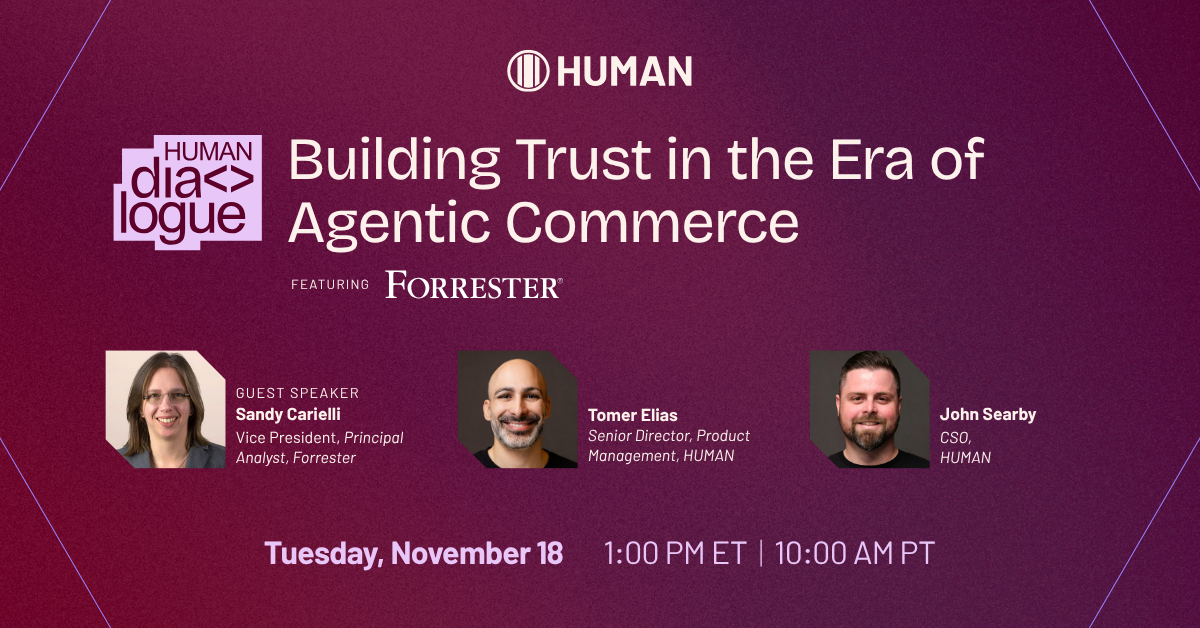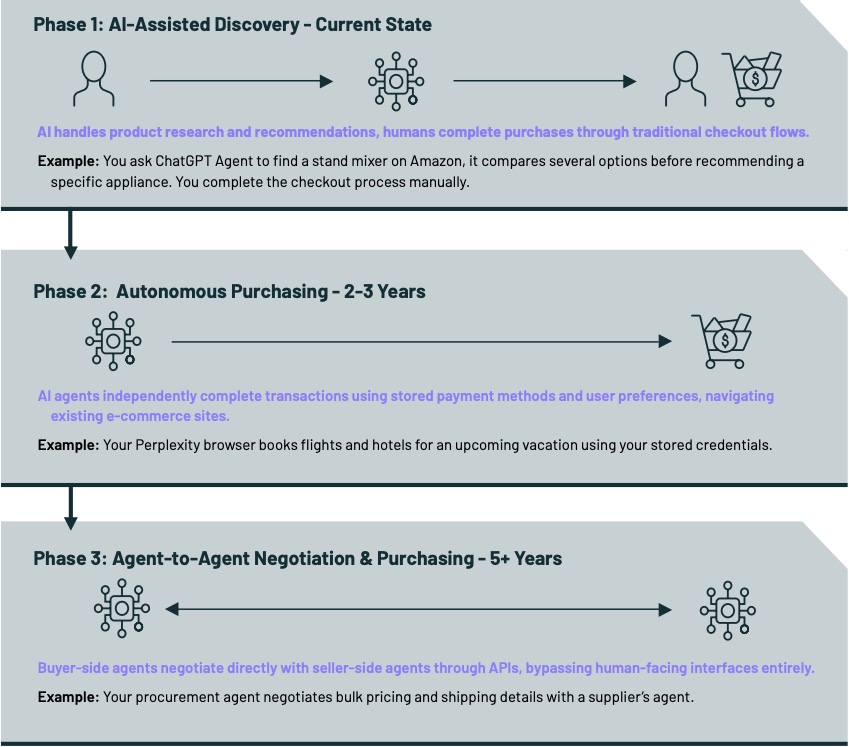This post is adapted from our Definitive Guide to Adopting Agentic Commerce in 2025. Download the full guide for our complete nine-step readiness framework and trust stack implementation strategy.
Digital commerce has always evolved through decisive shifts. Search made information universally accessible. Social platforms turned networks and influencers into discovery engines. Mobile put shopping directly into customers’ hands. Each transformation rewarded businesses that adapted early and left laggards behind.
We’re now at the start of another: agentic commerce. AI-powered agents are beginning to reshape the traditional funnel, moving directly from intent to purchase in machine time. The data confirms this acceleration is already underway: our recent analysis shows that traffic from AI Agents grew over 1300% in just nine months, with agents primarily focused on product research and discovery.
The shift from research to transaction is happening faster than most merchants expected. OpenAI recently launched Instant Checkout in ChatGPT, and major retailers like Walmart and Etsy are already embracing the new agentic marketplace.
But understanding what this shift means for your business requires looking beyond the numbers at how the fundamental mechanics of commerce are changing, and how we can expect them to change further in the future.

How Agentic Commerce Reshapes the Customer Journey
For years, marketers have mapped the customer journey as a funnel: awareness triggered by ads, social content, or word of mouth; consideration shaped by reviews, blogs, and brand research; conversion on a merchant site, marketplace, or app; and loyalty nurtured through service, promotions, and re-engagement.
Every stage required investment in ad spend, content marketing, and retargeting. Each was also a point where customers could drop off.
Agents compress this journey into a single interaction. A customer asks, “What’s the best running shoe for under $150 that ships quickly?” The agent interprets intent, filters options, weighs reviews and policies, and presents one or two purchase-ready answers. Conversion can happen immediately, without the traditional multi-click path.
For merchants, this changes the dynamics entirely. There are fewer opportunities to intercept—if you’re not in the first answer, you may not be seen at all. There’s more reliance on structured truth, as agents favor sources that are clear, factual, and authoritative. Once surfaced, friction is nearly eliminated, raising conversion rates. But there are also fewer chances for upsell. Agents fulfill the exact request. If a shopper asks for shoes under $150, the agent won’t suggest a t-shirt on sale unless such offers are structured and surfaced as clear value.
This is the foundational change brought by agentic commerce, but the evolution doesn’t stop at compressed discovery. It continues through what we can envision as three increasingly sophisticated phases of adoption.
Three Phases of Agentic Adoption
The acceleration of agentic commerce is not uniform. Different use cases will emerge at different speeds, and several models will coexist for years. What matters is recognizing the trajectory: from discovery, to autonomous purchasing, to full agent-to-agent negotiation.

These phases are not clean handoffs. Adoption of Phase 1 is already in full swing, while pilots of Phase 2 are beginning to surface, and experimentation around Phase 3 is underway in enterprise and procurement contexts. Merchants should expect overlap: human checkout flows will remain dominant for some time, even as autonomous agents start to handle routine purchases, and specialized agents begin testing direct negotiations.
Download the Full Guide
The phases of agentic adoption are just one part of the Definitive Guide to Adopting Agentic Commerce, which also includes:
- A detailed nine-step readiness framework for agentic commerce readiness.
- A four-layer framework for visibility, governance, and safe enablement of AI agents.
- Key statistics and insights on agent adoption, growth rates, and conversion lift.
Download the full guide to explore how bot threats are evolving and how your organization can stay one step ahead in the age of AI-driven automation.
Your Guide to Safely Adopting Agentic Commerce
See how AI agents are changing discovery and purchase, explore the emerging trust frameworks, and learn what readiness looks like for the agent-driven economy.




